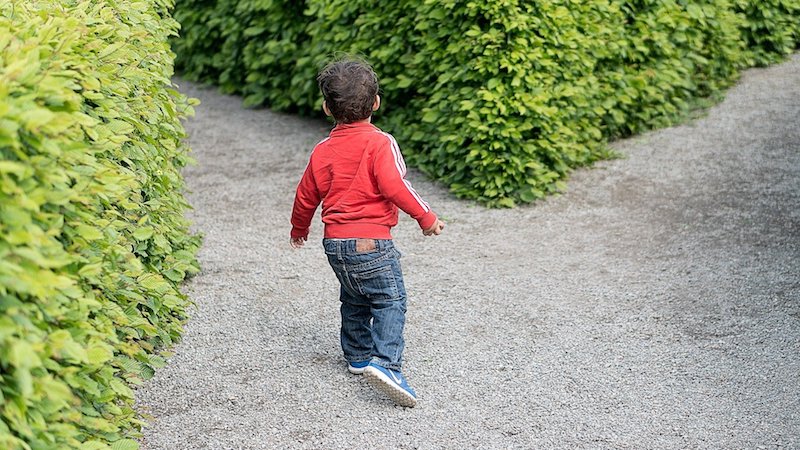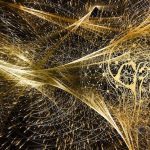In The Hitchhiker’s Guide to the Galaxy, Douglas Adams writes, “We demand rigidly defined areas of doubt and uncertainty!” As you might be able to tell, this book was written long before the COVID-19 pandemic, which has spread uncertainty throughout the world as fast as the virus itself. If only corralling uncertainty were as easy as Adams suggests, let alone when writing about uncertainty as a science journalist.
To date, the pandemic has claimed over 889,000 lives worldwide, with more than 189,000 of those in the United States (which remains the leading nation in terms of cases and deaths). The pandemic has also raised uncertainty to entirely new levels. Even months after the first cases in humans emerged late last year, scientists still don’t fully understand how the coronavirus SARS-CoV-2 causes COVID-19 or why some people are more at risk from serious illness.
This has left the public to grapple with the uneasy feeling that comes with not really knowing — and “not really knowing” about something that could kill you. It has also left science journalists to figure out what works when writing about the uncertainty that surrounds the coronavirus.
Types of uncertainty and certainty
Science journalists will inevitably find themselves writing about uncertainty. But what is uncertainty?
All living creatures have to contend with uncertainty during their lives. Each day we face uncertainty about the information that we take in — signs and stimuli — as well as uncertainty about the possible risks, or consequences, of the actions that we take based on that information. One way of looking at uncertainty, then, is that it describes “what we don’t know.” However, uncertainty differs from ignorance, which could be viewed as “what we aren’t even aware of.”
For example, if you don’t know that a mountain lion is sneaking up on you while you are out searching for berries, or that there is a carcinogenic chemical in your coffee, that is ignorance. On the other hand, if you see a mountain lion, but aren’t sure if it is dangerous (or even a lion at all and not a large dog), that is uncertainty. Likewise, you may know that there is a chemical in your coffee, but you may be uncertain about how dangerous it is due to a lack of scientific studies on the harmfulness of that chemical.
Some researchers have divided uncertainty into two domains. In a commentary in Media and Communication, Sharon Dunwoody, PhD, a professor of journalism and mass communications at the University of Wisconsin-Madison describes the difference between these two domains:
“External uncertainty captures the limitations of evidence in the external world. … Internal uncertainty, on the other hand, is reflected in our personal judgments about the risks around us.”
To continue the mountain lion metaphor, when you are walking in the woods and come upon an unfamiliar creature, your assessment of the creature will be limited by the external evidence that you are able to gather. Maybe you are too far away to get a good look at it, or maybe it is jumping down at you from a boulder and you don’t have time for a thorough analysis. Or maybe you forgot to wear your glasses, so you can’t really see it that well. This is all external uncertainty.
However, even when you have high-quality evidence — for example, you know it is a mountain lion because it is six to eight feet from its nose to the tip of its tail, and it has a short, tan-colored coat, and well, it looks like a mountain lion — how you internally process that information shapes your response.
You could have a severe phobia of being eaten by a mountain lion, in which case you will likely run away as fast as possible (or faint) — even if the mountain lion is a friendly pet. Or you may have only seen wild animals at the zoo and think that they are mostly harmless because they’ve never attacked you at the zoo. In these cases, your personal judgments can introduce additional uncertainty about the risks posed by the mountain lion.
Uncertainty is not just relevant to surviving in the wild, but is essential to how we understand our everyday world. Uncertainty is also at the heart of the scientific method. Dunwoody quotes from a book by biologist Kostas Kampourakis and philosopher Kevin McCain called Uncertainty: How It Makes Science Advance. These two researchers view certainty as falling into two similar domains as uncertainty:
“Epistemic certainty requires the presence of evidence that is ‘so strong that it makes it impossible that you could be wrong’, while psychological certainty reflects “how strongly we believe something.”
Kampourakis and McCain argue that scientists can never gather enough evidence to reach absolute certainty — which is why scientific hypotheses are not proven right, only disproven — which leaves us with psychological, or personal, certainty (or uncertainty) running the show. To put it another way: science can only take us so far toward the ultimate truth of the world; what we do with that limited knowledge depends on what’s happening in our mind.

Factors that affect information seeking
If you are a scientist, or a science journalist, your natural tendency may be to seek out credible sources of information before making judgements about the world. I often find myself wanting to do this in the middle of a conversation when someone is telling me about the “miraculous” benefits of a “superfood” or a similar tweet-worthy or Tiktok-worthy factoid. This is why for many science journalists, writing about uncertainty is an easy thing to do.
However, not everyone thinks this way (which I find difficult to believe, although it does explain the strange looks I get at parties when I suggest, “we should look for a study on PubMed”). Dunwoody suggests that even though thinking systematically (aka, like a scientist) can help you judge risk more accurately, people have never been very good at this:
“We typically engage in rather superficial information seeking and processing, relying on small dollops of information from a modest cadre of sources (sometimes even one source will do!) for even the most important decisions.”
She adds that we are also more likely to judge whether an information channel is accurate, rather than critique individual information sources. For example, we may judge that all news coming from Fox News or NPR or our friends on Facebook is trustworthy, rather than assessing each news item separately. This saves us both time and energy (which is at the heart of social media’s appeal).
Dunwoody points out that the current situation with the coronavirus that causes COVID-19 makes this approach to uncertainty less useful. First, SARS-CoV-2 is a novel coronavirus, so there is much that we don’t know about it. And second, there is so much misinformation online about COVID-19 that we are easily overwhelmed with uncertainty.
You might think that when people are faced with a high level of uncertainty — as with the pandemic — they would seek out information from credible sources in order to reduce some of that uncertainty. That’s not always the case.
Dunwoody lists several factors that affect whether a person is likely to seek out and process information before making a decision or acting. These are important for science journalists to keep in mind when writing about uncertainty, because many readers may be avoiding the information you are trying to share.
- Business as usual. When people feel both a sense of fear and helplessness, they may simply ignore a problem — as well as ignore information having to do with the problem — and go about their lives as if it were any old day. With the COVID-19 pandemic, this shows up in scenes of people eating brunch at a crowded buffet or cramming into bars with their friends before a city-wide lockdown comes into effect.
- Doesn’t apply to me. Even if people understand that a situation poses a risk, they may downplay the risks to themselves, thinking that other people are more at risk. This shows up as a sense of personal invulnerability — “I don’t need to wear a mask, because COVID-19 won’t hurt me.” People in this mode still process information, but in a way that emphasizes their invulnerability. This is why communicating effectively about risks is an important aspect of writing about uncertainty.
- Turn to default sources. There is a great deal of conflicting information about COVID-19. Some of this stems from misinformation, but there is also a great deal of uncertainty in our scientific understanding of the coronavirus. To avoid these conflicts, people may fall back on their usual sources of information, the channels that they have judged to be trustworthy — even if the information is inaccurate. This can lead to people knowing “a lot” about COVID-19; however, what they know may be vastly different from what someone else might know.
- Influence of politics. Information gathering can be further challenged by the influence of politics on the sources of information. This process is not unique to COVID-19. Climate change, vaccines, autism, and evolution have all become highly politicized over time, with people turning to sources of information that support their ideological viewpoints. But this politicization occurred even more rapidly with COVID-19. “Political figures and ideological groups began building partisan narratives about the risk immediately, competing directly with science narratives that sought to focus on evidence,” Dunwoody writes.
Writing about uncertainty as a science journalist
So how can science journalists writing about uncertainty do so in a way that helps readers acknowledge the uncertainty inherent in the COVID-19 pandemic, without readers shutting out useful information or getting drawn down the misinformation rabbit hole? Dunwoody offers a few options:
Rely on credible experts. In general, the public views scientists and physicians as credible sources of information. “Most of us are more likely to believe what scientists tell us about a scientific issue than what we glean from other types of sources,” writes Dunwoody.
However, in the age of social media, anyone can claim to be an expert, so science journalists should pay special attention to which experts they interview for their stories. For example, a quote from an infectious disease expert about COVID-19 is likely to be more relevant to a story on the transmission of the virus than a quote from a family physician.
Write high-quality stories. Because many consumers still turn to print or online news publications for information about health-related topics like COVID-19, science journalists have an opportunity — and a duty — to carefully “gather and evaluate information before packaging it for public consumption,” writes Dunwoody.
The science journalist — who has training and education in how science is carried out, along with an understanding of its limitations — is in a unique position to carefully present the facts about COVID-19 in a way that helps readers understand what we do and don’t know about the coronavirus.
Don’t let misinformation go unchallenged. Dunwoody writes that “a dramatic increase in fact-checking among media organizations around the world gives audiences the opportunity to access almost immediate comparisons between claims and evidence for or against [COVID-19-related] assertions.”
There is so much misinformation online, though, that science journalists could easily spend all of their time correcting all of the erroneous tweets or Facebook posts about COVID-19. However, there’s been a movement recently among scientists and journalists online to confront or counter misinformation whenever they see it.
This is one way that, when writing about uncertainty, science journalists can do so in a way that has positive benefits. This can also help more accurate assessments of the external world take root on social media.
_____
“Have patience with everything that remains unsolved in your heart.
…live in the question.”
― Rainer Maria Rilke, Letters to a Young Poet







